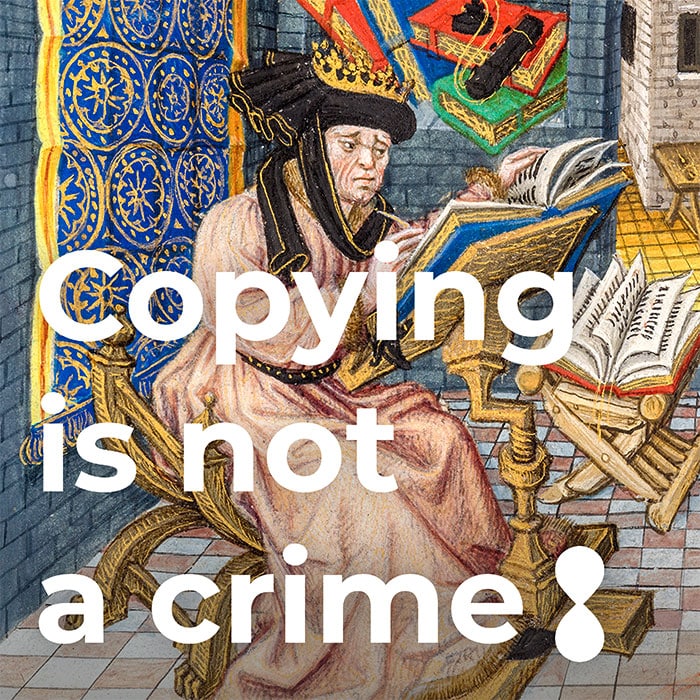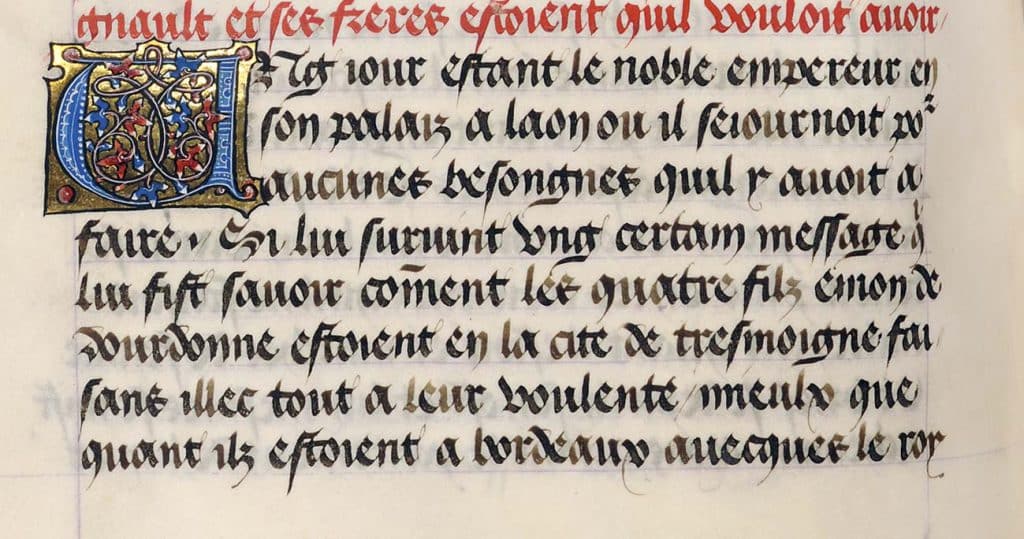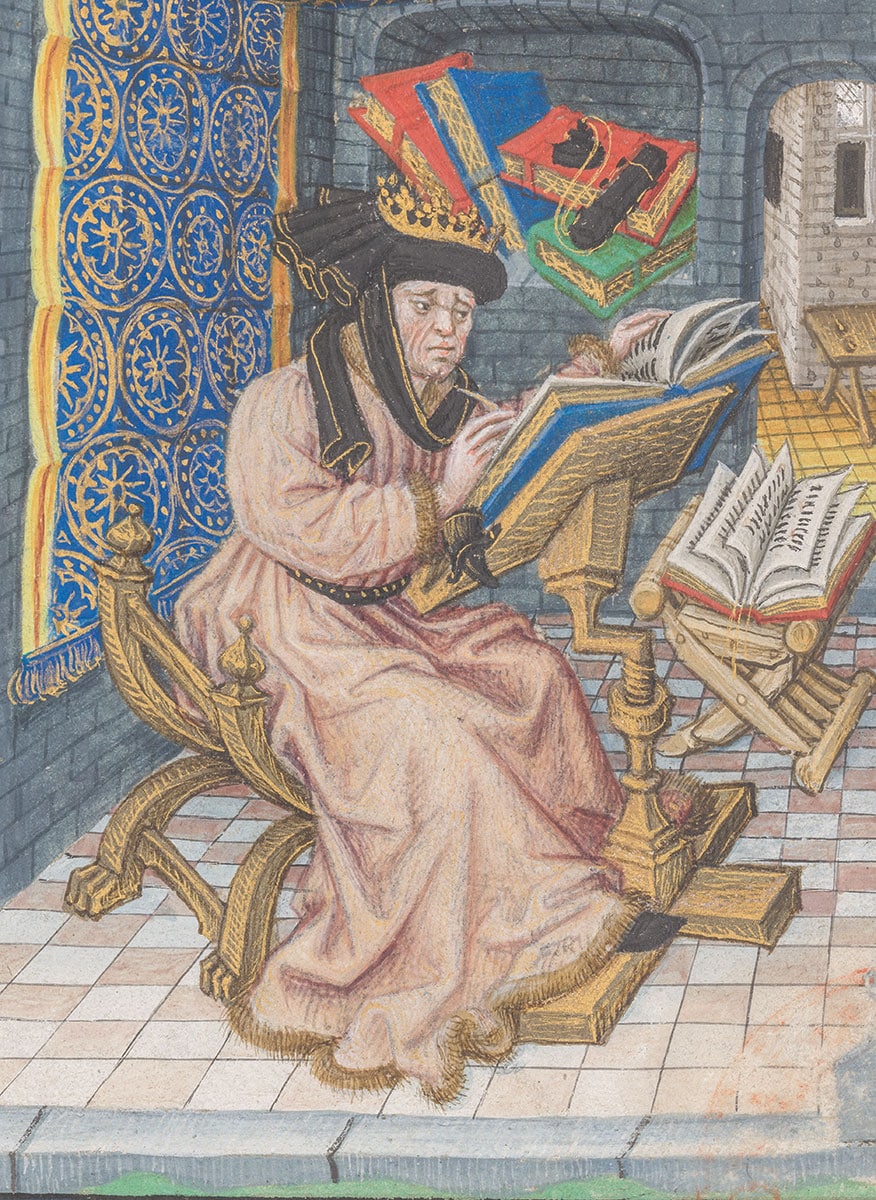For thousands of years, techniques for sharing information and texts have evolved along with their audience. Before the invention of printing, a book was a manuscript, which literally means “handwritten”. It could take months or even years to manufacture only one copy.

Meticulous work
Before starting to write, the copyist draws the edges and lines that will guide him while writing the text. They usually remain visible once the manuscript is completed. After this, he has to prepare the ink and cut his writing feather. Then he can finally start writing the letters. He does not rest his hand on the page and he works in a regular rhythm to ensure uniformity. Copyists are often presented with a writing feather in one hand and a knife in the other. The knife served to sharpen their feather regularly, but also to scrape away any mistakes and stains.
Everyone has his own handwriting style
There are many types of handwritten scripts. They differ according to place and time, but also according to the types of texts. In the 15th century, the letters do not have the same shape depending on whether it is a mass book, a commercial contract, a novel or the translation of an ancient text by a humanist. As book lovers and trendsetters, the Burgundian dukes have their own script: the Burgundian bastarda.

And the famous monk-copyist?
Abbeys were important places for the production of manuscripts during the Middle Ages. With the rise of the universities, the workshops of book craftsmen develop little by little in the cities.
In the 15th century, the production of manuscripts is now considered an urban craft. This evolution translates in particular into an increasing production of profane texts that appeal to the new clientele in cities.
The monk-copyist does exist, but is by no means the only one who copied medieval texts. Moreover, there are also female copyists, be they religious or lay people.

Discover how much time it would have taken you to copy a manuscript during a visit to the KBR museum.
Get to know the KBR museum through a series of facts that take you back to the time of the Burgundian dukes. Discover the knowledge hidden in the manuscripts of their library and learn more about the themes in the museum.
Discover the KBR museum Buy your ticket now